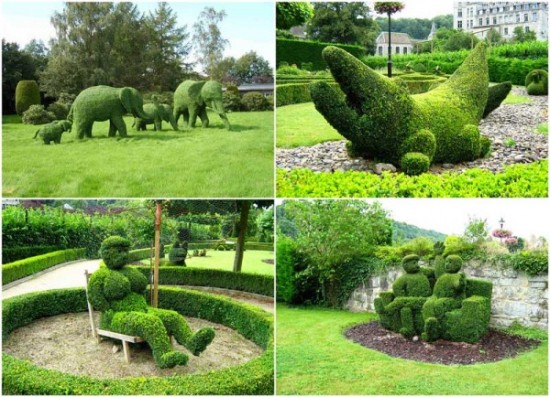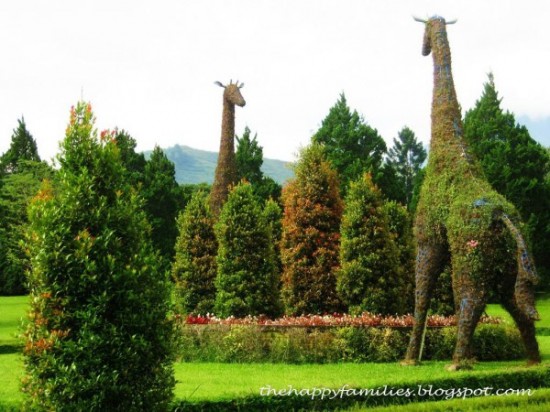From the green obelisks of early Roman villas to the tidy private mazes of medieval monasteries, topiary sculptures have evolved alongside the design of the garden. Animals Like Elephant and pig looking green against the bright grass and bushes. In the shadow of well-fed people dropped located, generously covered with green leaves …

Topiary – [tö’pi-er’i] – patterned or imaginary figures for the landscape, the art of topiary trees and shrubs. The word «topiary» comes from others-Greek. τόπος – place.
In Latin this word – topiarius referring to the ornamental art. Topiarius (cusch) – topiarius – gardener. Topiary – means ornamental art.
Topiary – began in ancient art of topiary trees and various shrubs, giving the plants of various shapes, such as animals, architecture, people, etc. Topiary (English topiary) comes from the Latin topiarius – Landscape gardener ornament.
The process of creating these sculptures long, very tedious and time-consuming, because “educate” those green “akkuratistov” have since childhood, gradually, year after year, to teach them to new forms, and then supporting these forms of regular haircuts. The shortest term for a little animalistic figures of 6-7 years. First, using a stimulus activates fertilizing growth in the second year are beginning to form skeletal branches and only five years begins outlining the silhouette. Get geometric shapes – a simple task, but it also requires patience and expertise
Mention of topiary has its roots in ancient Egypt and Persia. Symmetrical gardens with stone-paved paths, magnificent fountains, ornamental shrubs, yew hedges and intricate maze of green … In the Babylonian kingdom topiarnogo art inspired artists to create one of the seven greatest wonders of the ancient world – the famous Hanging Gardens of Babylon. A Roman gardeners constructed wonderful gardens, fenced hedges, inhabiting their strange creatures of boxwood. The ancestor of topiary art (from the Latin. Topia – fresco depicting the landscape, topiarus – gardener, from the Greek. Topis – homestead.) Itself is Knei Matij (Gnaius Mattius), one of the Emperor Augustus, who lived in the first century BC.
With the Romans conquering the art of topiary, developing new green landscapes, conquers Europe. True, the harsh medieval craftsmen leaves topiary only area surrounding the castles of the feudal lords and the gardens of monasteries. But later, during the Renaissance, almost every wealthy owner in Italy is committed to own an exquisite garden. Boundless imagination of Italians – ordinary shrubs, magically transformed into green chapels, colonnades, animal figures, on the green park degree of “walking” by the foliage of the Cardinals and the Pope gives his blessing to his flock.
A new stage in the development of art topiary is happening in North America. It is here to create a green sculptures first used wire frames. In topiarnogo Art opens a second wind. Metal for topiary can achieve special delicacy and finesse in details. It is thanks to a frame made of wire modern masters garden business can use plants earlier this does not fit, embodying the new ideas and decorative forms, and amateur gardeners who do not have special skills, have the ability to create whimsical green shapes.













